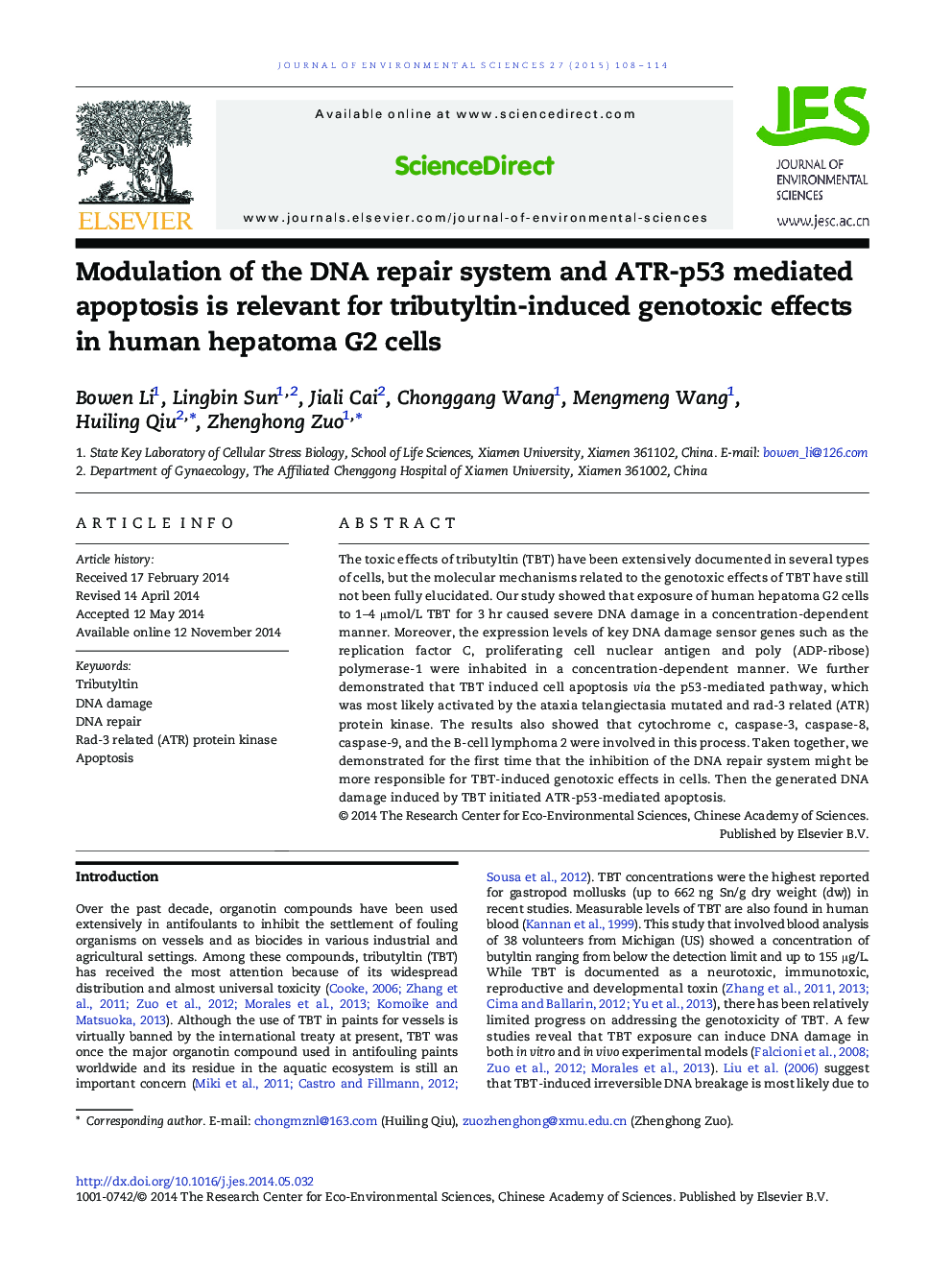| Article ID | Journal | Published Year | Pages | File Type |
|---|---|---|---|---|
| 4454177 | Journal of Environmental Sciences | 2015 | 7 Pages |
The toxic effects of tributyltin (TBT) have been extensively documented in several types of cells, but the molecular mechanisms related to the genotoxic effects of TBT have still not been fully elucidated. Our study showed that exposure of human hepatoma G2 cells to 1–4 μmol/L TBT for 3 hr caused severe DNA damage in a concentration-dependent manner. Moreover, the expression levels of key DNA damage sensor genes such as the replication factor C, proliferating cell nuclear antigen and poly (ADP-ribose) polymerase-1 were inhabited in a concentration-dependent manner. We further demonstrated that TBT induced cell apoptosis via the p53-mediated pathway, which was most likely activated by the ataxia telangiectasia mutated and rad-3 related (ATR) protein kinase. The results also showed that cytochrome c, caspase-3, caspase-8, caspase-9, and the B-cell lymphoma 2 were involved in this process. Taken together, we demonstrated for the first time that the inhibition of the DNA repair system might be more responsible for TBT-induced genotoxic effects in cells. Then the generated DNA damage induced by TBT initiated ATR-p53-mediated apoptosis.
